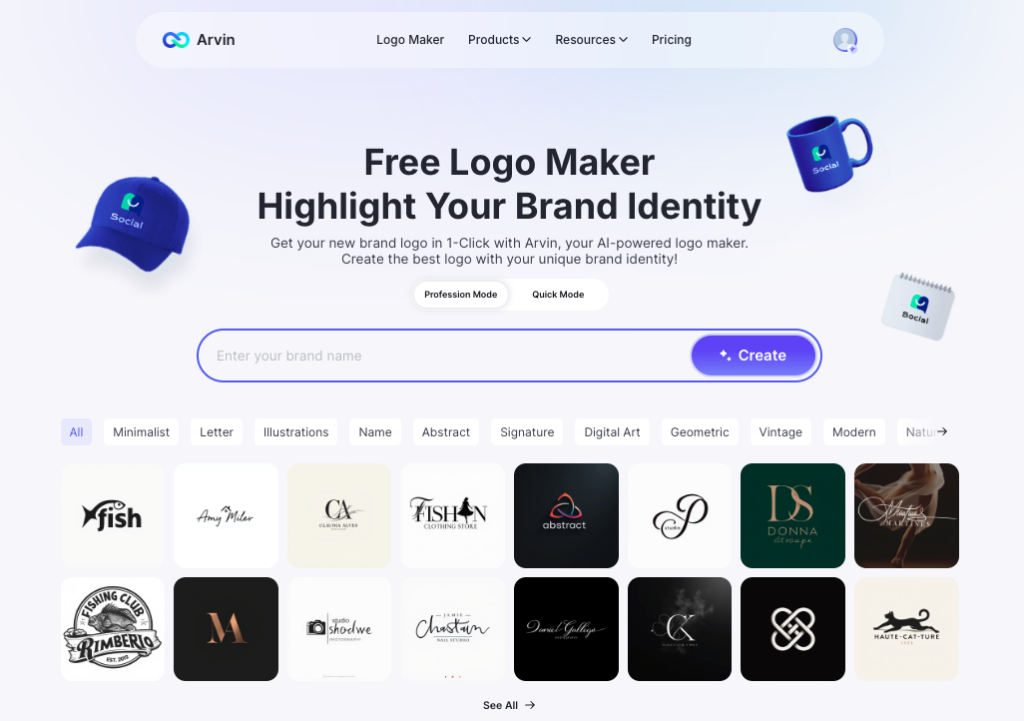What is behavioral marketing? You head into a store intending to buy just a few specific items. Maybe it’s just some bread and milk. But as you navigate the aisles, you find yourself adding other things to your cart. A new flavor of chips. A bottle of wine for the weekend. Even some discounted chocolates at the checkout counter. Before you know it, your small basket has turned into a full cart.

This isn’t by chance; it’s the result of carefully crafted strategies used by retailers to influence buying behaviors. Stores are designed to maximize customer spending, using layout strategies and psychological triggers that tap into our impulses. For instance, essential items like dairy products are often placed at the back of the store. This design forces shoppers to walk past a multitude of other tempting products before getting what they initially came for. This increases the chances of impulse buys.
All these tactics are based on behavioral insights that retailers use to subtly encourage consumers to buy more. And just how powerful and effective behavioral marketing can be in our everyday decision-making processes.
Enhance your brand’s appeal by creating a logo with Arvin AI Logo Maker!
What Is Behavioral Marketing?
Behavioral marketing is a sophisticated strategy. It leverages consumer behavior data to tailor marketing campaigns that are highly specific to individual preferences and past behaviors. This approach dives deeper than just demographic or geographic data. It analyzes real interactions like purchase history, browsing patterns, and social media activity to create a marketing strategy. This strategy will likely resonate on a personal level.

For example, if you’ve ever noticed that after browsing for running shoes on a sports website, you start seeing ads for similar products across different online platforms, you’ve experienced behavioral marketing firsthand. This is not coincidental but a deliberate application of behavioral marketing tactics. The ads you see are specifically targeted based on your previous online activities. They’re aimed at influencing your purchasing decisions by reminding you of your initial interest.
Behavioral marketing extends beyond online ads. It includes email campaigns that are triggered by specific actions like abandoning a shopping cart. Many online retailers send follow-up emails reminding customers of what they left behind. And, sometimes offer a discount to encourage a purchase. This method significantly boosts conversion rates. They do this by keeping the products top of mind and providing a nudge to complete the purchase.
Behavioral Marketing Strategies
The process begins with the meticulous collection of data from various sources. They include web cookies, transaction records, and social media engagement. This wealth of information is segmented to classify consumers into groups with similar behaviors or preferences. This can range from the frequency of purchases to specific interest in content types. For instance, Netflix uses behavioral data to recommend shows and movies. This is based on past viewing habits, significantly enhancing user experience and engagement.
1. Personalized Email Marketing
Amazon’s approach to email marketing is a classic example of behavioral targeting. They send personalized emails based on the user’s browsing history, previous purchases, and even cart abandonment. This makes each communication feel bespoke, significantly increasing the chances of converting a sale.
2. Retargeting Campaigns
Facebook ads allow businesses to retarget visitors who have left their website without making a purchase. By using behavioral data, companies can show targeted ads to these users on Facebook. This reminds them of the products they viewed but didn’t buy, thereby increasing the likelihood of these users returning to complete a purchase.
3. Dynamic Website Content
Netflix changes its user interface for each subscriber based on their past viewing behavior. This dynamic customization ensures that users are more likely to find content of interest faster, enhancing user engagement and satisfaction.
4. Loyalty Programs
Sephora uses purchase data to personalize rewards and offers for its loyalty program members. This not only encourages repeat purchases but also makes each member feel valued, increasing brand loyalty.
5. Utilization of Social Proof
TripAdvisor integrates user-generated content such as reviews and ratings to guide potential customers. This use of social proof helps in building trust and influencing the booking decisions of new customers based on the behaviors of previous ones.
6. Behavioral Segmentation
Spotify segments its users based on their listening habits to create personalized playlists and recommend new songs and artists. This approach not only keeps users engaged but also makes the music discovery process much more tailored and enjoyable.
Discover how a well-crafted logo influences customer decisions. Try Arvin AI Logo Maker and see the impact on your marketing!
Behavioral Marketing Case Studies:
TikTok and Doom Scrolling
TikTok utilizes a highly addictive, algorithm-driven model. It presents users with an endless stream of short videos optimized to capture and retain their attention. This is a prime example of behavioral marketing. And, user engagement data (what they watch, skip, and like) is used to fine-tune content delivery, maximizing time spent on the app. The ethical issue arises from how this model can lead to overconsumption. Users often report losing track of time while using the app. This is a phenomenon known as “time distortion”. And it is linked to the addictive nature of the platform’s interface and content delivery mechanisms.

This addiction potential raises significant concerns about the impact on mental health, particularly among younger users. Studies and user reports suggest that excessive use of such platforms can lead to increased anxiety, depression, and decreased attention spans. From an ethical standpoint, the concern is that TikTok may prioritize engagement over the well-being of its users. And can result in exploiting psychological vulnerabilities to foster addictive behaviors.
Fast Fashion and Instagram Marketing
Another realm where behavioral marketing raises ethical issues is in the fast fashion industry. Especially as they’re promoted through platforms like Instagram. Brands like Shein and Fashion Nova use Instagram influencers to market their products. They do this by capitalizing on trends and the persuasive power of social proof.
Social proof is a behavioral bias where individuals assume the actions of others in an attempt to reflect correct behavior for a given situation.

However, this marketing strategy often glosses over the environmental and ethical implications of fast fashion. This includes poor labor conditions and significant environmental degradation. The continuous promotion of new trends and “must-have” purchases encourages overconsumption and waste. Ethically, this practice is problematic. It leverages behavioral marketing to drive sales without addressing the significant adverse impacts of such consumption patterns.
YouTube’s Auto-Play Feature and Screen Time
YouTube’s auto-play feature, which automatically starts a new video after the current one finishes, is another example of behavioral marketing tactics. It is designed to significantly increase user engagement. While this feature can improve user experience by reducing the effort needed to find new content, it also encourages prolonged screen time, which can be particularly impactful on children and adolescents.

The ethical concern here revolves around the potential for reduced physical activity. Not only that, disrupted sleep patterns are associated with increased screen time. In response to these concerns, YouTube has introduced features that remind users to take breaks. They also allow parents to set screen time limits for their children. This indicates a shift towards more ethically aware features designed to mitigate the platform’s more addictive aspects.
Are you leveraging the psychological power of logos in your marketing? Use Arvin AI Logo Maker to design a logo that not only looks great but also enhances customer engagement.
Behavioral Marketing Examples
The implementation of these personalized strategies is conducted across the most effective channels identified for each segment. This is through social media, email, or direct website interaction. The impact of these strategies is continuously analyzed, allowing marketers to tweak and refine their approach based on real-time feedback. And optimizing both the effectiveness and efficiency of their campaigns.
One of the most famous cases was the Target Pregnancy case.
Target Pregnancy
A notable instance of advanced behavioral marketing is provided by Target’s use of predictive analytics to identify changes in customer life stages, specifically pregnancy, based on purchasing behavior.

The story begins with a father’s angry confrontation with a store manager after his teenage daughter received a mailer from Target filled with coupons and advertisements for maternity clothing and baby items. The father’s initial outrage was driven by a belief that such targeted advertising was inappropriate and potentially influential in encouraging behaviors like teen pregnancy. However, the situation took a turn when the father later discovered that his daughter was indeed pregnant, leading to his own realization and subsequent apology to the store manager.
Target employed complex algorithmic models to analyze shopping data and assign a “pregnancy prediction” score. This model looked at purchasing patterns correlated with pregnancy, such as increased purchases of unscented lotions and certain supplements. By crunching data from customer transactions, which included product selections and changes in buying habits over time, Target’s statisticians, like Andrew Pole, were able to identify pregnant customers even before these customers had made their pregnancies public.
2016 United States Election
The controversy surrounding Facebook’s involvement in the 2016 U.S. presidential election showcases a complex web of issues involving data privacy, misinformation, and foreign interference, which collectively sparked a major public and political uproar. A key element of this controversy was the exploitation of Facebook’s data by Cambridge Analytica, a political consulting firm. This firm accessed the personal information of approximately 87 million Facebook users without their explicit consent through a seemingly harmless personality quiz app. The data included details about individuals’ personal preferences, social networks, and even political inclinations. Cambridge Analytica used this data to create sophisticated psychological profiles, aiming to target American voters with precision political advertisements to sway their opinions and potentially influence their voting decisions.

Simultaneously, the platform became a battleground for misinformation campaigns. Various actors, including foreign entities, leveraged Facebook’s vast reach and highly targeted advertising tools to spread false information. This was particularly evident in the proliferation of fake news stories that were designed to mislead voters or exacerbate social divisions. For instance, fabricated stories about political candidates or misleading claims about the electoral process went viral, thus contaminating the political discourse and misleading the public.

Moreover, investigations revealed that Russian-backed operatives had systematically used Facebook to interfere in the electoral process. These operatives created and disseminated inflammatory posts and ads that aimed to polarize the American public and amplify societal fractures. These posts often masqueraded as genuine content from activist groups and were intended to stir up discord on sensitive issues such as race relations and gun rights. The Russian interference extended to organizing real-life events, coordinating protests and rallies across various U.S. cities, demonstrating the real-world impact of online manipulation.
Want to know how a logo can change consumer perception? Create with Arvin AI.
Behavioral Marketing Book
If you’re looking to dive deep into the world of behavioral marketing, one of the most comprehensive and insightful books to explore is “Hooked: How to Build Habit-Forming Products” by Nir Eyal. This book offers a detailed look at the psychological strategies behind creating products that captivate users and keep them returning.
Nir Eyal presents a four-step process called the Hook Model, which is a cycle of trigger, action, variable reward, and investment. This model explains why some products are able to engage users repeatedly and suggests how to leverage these principles in product development. The book is grounded in the psychology of behavior, drawing from Eyal’s years of research, consulting, and practical experience.

“Hooked” provides a practical framework for understanding user behavior, which marketers, product designers, and startup founders can apply to increase customer engagement. The book includes numerous case studies from successful companies like Twitter, Instagram, Pinterest, and more that illustrate how these businesses have successfully implemented behavioral techniques to keep users engaged. Eyal also discusses the ethical implications of behavior design, encouraging creators to use the Hook Model responsibly and to contribute positively to users’ lives.
Boost your marketing strategy now! Design your logo with Arvin AI and make a lasting impression.
Behavioral Marketing Jobs
Behavioral marketing is a dynamic field that capitalizes on the patterns of consumer activities and psychological principles to tailor marketing strategies that are both effective and engaging.
For instance, a Behavioral Marketing Analyst typically dives into the deep end of consumer data to unearth patterns, preferences, and potential trends that could predict future buying behaviors. This role involves rigorous analysis, often using advanced tools like SPSS or Python, to shape targeted marketing campaigns. A notable example of this in action was Netflix’s use of viewing data to not only recommend personalized shows to users but also to decide which series to produce, enhancing viewer engagement and subscription retention.
Another critical role is that of the Consumer Insights Manager. This position focuses on synthesizing vast amounts of market research to develop a nuanced understanding of consumer desires and behavior. For example, Coca-Cola utilizes consumer insights to tailor their product offerings and marketing messages across different regions, effectively resonating with diverse consumer bases worldwide by aligning product launches and marketing messages with localized consumer behavior and preferences.
Behavioral Strategists, on the other hand, employ psychological principles directly in creating compelling marketing strategies. A classic case involved the use of scarcity and social proof by companies like Amazon, where limited-time offers and customer reviews are prominently displayed to nudge consumers towards making faster and more frequent purchases, capitalizing on the fear of missing out (FOMO).
Ethical Considerations of Behavioral Marketing
Transparency and Consent
One of the primary ethical concerns in behavioral marketing is the transparency of data collection methods and the extent to which consumers are informed. Consumers often do not realize the amount of personal data they relinquish when engaging with online platforms, nor are they fully aware of how this data is utilized. Ethical marketing practices necessitate clear consent protocols where consumers are informed in a straightforward, understandable manner about what data is being collected, how it will be used, and who it might be shared with. For instance, the General Data Protection Regulation (GDPR) in the European Union enforces stringent rules about transparency and consent, setting a benchmark that many view as a gold standard for ethical data use.
Privacy and Data Security

The accumulation and analysis of vast amounts of consumer data inevitably raise significant privacy issues. There is a persistent risk that personal information could be misused or inadequately protected against breaches. Ethical behavioral marketing must prioritize robust data security measures to protect consumer information from unauthorized access or leaks. Furthermore, marketers must handle data in ways that respect consumer privacy, avoiding overreach into sensitive areas or the use of data in ways that consumers might find invasive or objectionable.
Manipulation vs. Influence

Behavioral marketing walks a fine line between influencing consumer choices and manipulating them. Ethical considerations come into play in discerning this boundary. Techniques such as creating a false sense of urgency (e.g., countdown timers for deals), employing dark patterns that trick users into subscribing to services, or exploiting cognitive biases can veer into manipulative territory. Marketers need to be vigilant about the tactics they employ, ensuring that they enhance decision-making without coercing it.
Social Responsibility

There’s also the broader impact of marketing practices to consider—how they affect societal norms, values, and behaviors. Behavioral marketing has the power to shape cultural trends and societal behaviors, which carries a responsibility to foster positive outcomes. For instance, promoting excessive consumerism can lead to wasteful consumption patterns that may harm environmental and social structures. Ethically conscious marketers might instead choose to promote sustainable products or use their insights to foster beneficial behaviors, such as encouraging energy-saving habits or healthier lifestyles.
Need a logo that drives more engagement? Do it with Arvin AI’s Logo Maker.
Consumer Autonomy
At the heart of the ethical debate is the respect for consumer autonomy—ensuring that marketing practices do not undermine the consumer’s ability to make free choices. Behavioral marketing should not reduce consumers to mere subjects of corporate agendas. Instead, it should empower them with information and choices that enhance their decision-making processes. This involves providing options without overwhelming or misleading consumers, thus supporting an environment where consumers feel in control of their choices.

Final Words
In sum, while behavioral marketing offers profound advantages for personalizing consumer experiences and driving business success, it introduces ethical complexities that must be navigated carefully. Marketers must engage in ongoing ethical reflection and dialogue, adapting their practices in line with evolving standards of consumer protection, respect, and fairness. This approach not only avoids potential pitfalls but also builds long-term trust and loyalty with consumers, ensuring that marketing strategies are both effective and ethical.
Incorporating Arvin AI Logo Designer into the realm of behavioral marketing, particularly for tasks like logo creation, opens up innovative possibilities for brand differentiation and customer engagement.

Arvin AI Logo Maker specializes in utilizing advanced algorithms to craft logos that are not only visually appealing but also align closely with the brand’s identity and values. This capability is pivotal in behavioral marketing, where the visual elements of a brand, like logos, play a crucial role in influencing consumer perceptions and decisions.
FAQ
An example of behavioral marketing is when online retailers like Amazon track your browsing and purchasing history to show you products that align with your interests and past behavior. This personalization enhances the likelihood of making additional purchases based on predicted preferences.
Behavioral marketing is a technique used by marketers to understand consumer actions across various channels and tailor marketing messages based on their specific behaviors and preferences.
Companies use behavioral marketing to increase the efficiency and relevance of their advertising. By analyzing data on consumer behavior, companies can create personalized marketing campaigns aimed at specific segments of their audience.
A clear example of behavioral learning in marketing is seen in loyalty programs. Customers are rewarded with points or discounts for repeated purchases.
The behavioral theory of marketing posits that consumer purchasing decisions are influenced by emotions and behavioral patterns more than by rational thought.







